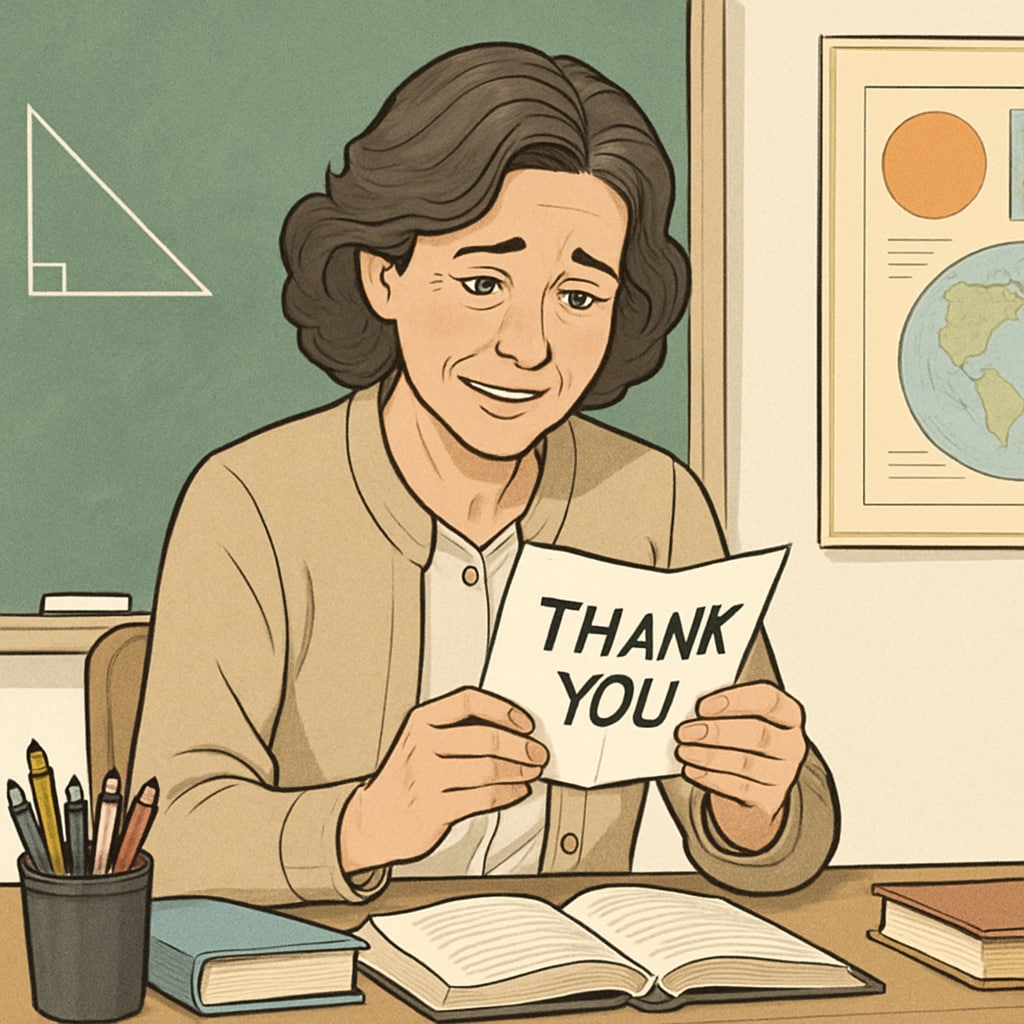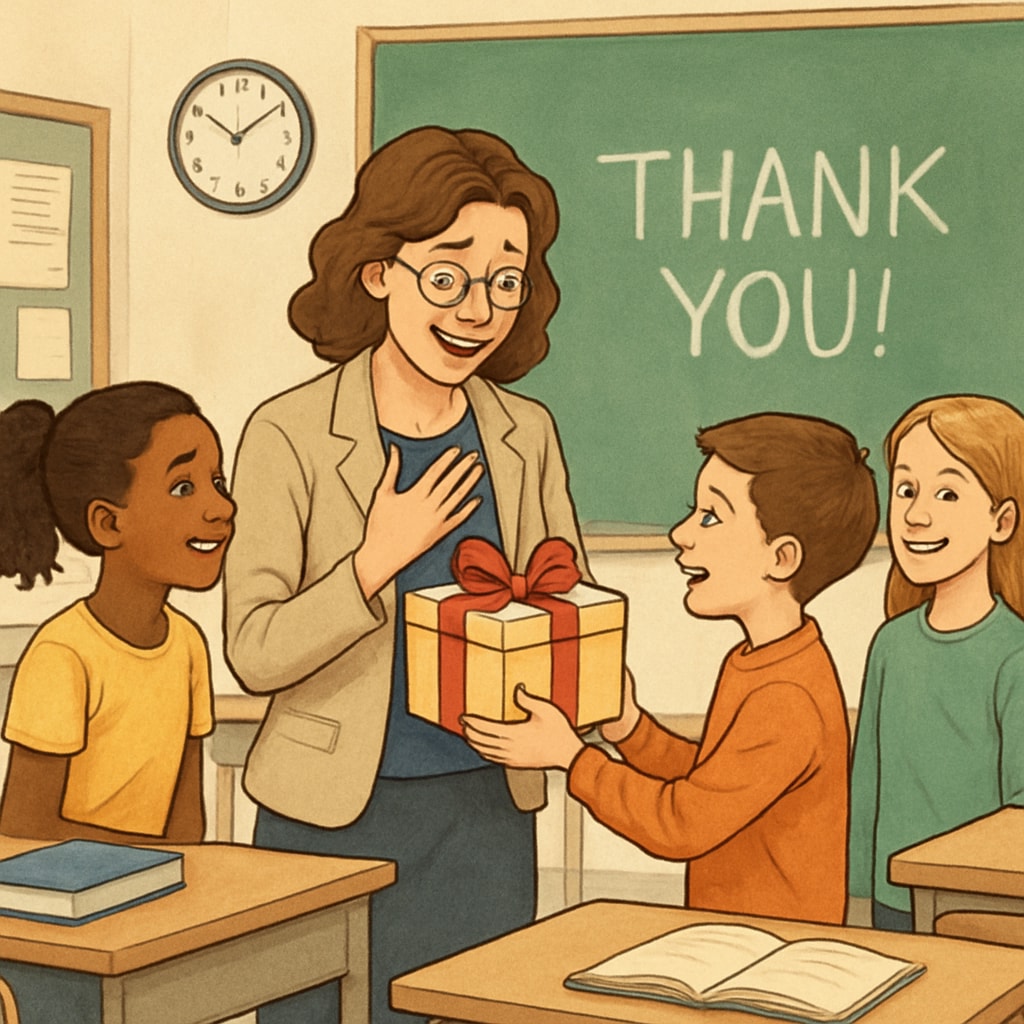The relationship between teachers and students is built on trust, patience, and shared growth. While academic achievements are often celebrated, one of the most profound yet overlooked rewards for educators comes in the form of student gratitude. These simple acts of appreciation—whether spoken, written, or expressed in actions—carry immense significance. The power of a heartfelt “thank you” can redefine the meaning of teaching, leaving a lasting impression on educators. Moments like these highlight the transformative influence teachers have and strengthen the teacher-student bond in ways that transcend the classroom.
The Power of a Simple “Thank You”
Among the countless responsibilities of teachers, the ability to shape young minds stands as their most vital role. However, the emotional labor involved in teaching is often unseen. A student’s genuine expression of gratitude serves as a powerful acknowledgment of this effort. Whether it’s a letter handed over shyly after class or a verbal “thank you” as they leave the room, these moments remind teachers of the purpose behind their work. Gratitude serves as a bridge, connecting the educator’s dedication to the student’s recognition of that effort.
For example, one high school teacher recalls receiving a handwritten note from a struggling student, thanking her for believing in him when no one else did. That single note stayed on her desk for years, serving as a reminder of the positive impact she made. Such instances are not rare; they are universal experiences shared by educators worldwide, illustrating the profound effect of small gestures.

Why These Moments Matter
Teachers often work tirelessly, investing not only in their students’ academic growth but also in their emotional well-being. This dual role can be exhausting, but moments of gratitude provide much-needed validation. According to a study by Wikipedia on teacher burnout, educators face high levels of stress due to their demanding roles. However, research also shows that positive feedback, including expressions of gratitude, reduces stress and increases job satisfaction.
Moreover, these moments reinforce the human connection within education. They remind teachers that their work is not just about curricula and exams but about shaping lives. A simple “thank you” can turn a challenging day into a rewarding one, reaffirming the value of teaching as a profession.
Examples of Gratitude That Transcend the Classroom
Student gratitude can manifest in countless ways, from unexpected gestures to small, heartfelt words. Here are some examples:
- A university professor was moved to tears when a former student returned years later to thank her for inspiring his career in environmental science.
- An elementary school teacher received a scrapbook filled with letters from her students, each sharing how she had made learning enjoyable for them.
- A music teacher was surprised with a video compilation of students performing pieces they learned under his guidance, sent as a token of appreciation upon his retirement.
These anecdotes highlight how gratitude can create moments of connection that last a lifetime.

Fostering an Environment for Gratitude
While gratitude is often spontaneous, teachers and schools can nurture an environment where appreciation is a natural byproduct of the culture. Here are a few suggestions:
- Model Gratitude: Teachers who express gratitude to their students for participation, effort, or kindness set an example that students are likely to follow.
- Create Opportunities: Schools can implement activities like gratitude journals, appreciation days, or even simple thank-you card projects to encourage expressions of thanks.
- Build Relationships: Open communication and mutual respect between teachers and students lay the foundation for authentic expressions of gratitude.
Fostering gratitude benefits not only teachers but also students, as they learn the value of acknowledging others’ efforts.
Conclusion: A Gift Beyond Measure
The journey of teaching is often marked by challenges, but it is also filled with deeply rewarding moments. Student gratitude is one such reward that has the power to uplift, inspire, and motivate educators. These heartfelt acknowledgments serve as a reminder of the profound impact teachers have on their students’ lives. In the end, a simple “thank you” is not just a form of appreciation—it is a testament to the enduring bond between teacher and student, a bond that transforms both parties in meaningful ways.
For teachers, the real gift lies not in accolades or recognition but in the knowledge that they made a difference. And for students, expressing gratitude is a way to honor the educators who shaped their journey. Together, these moments weave a narrative of connection, growth, and shared humanity.
Readability guidance: This article uses examples, lists, and short paragraphs to ensure accessibility. Transitions like “however,” “for example,” and “as a result” are included to maintain flow. Passive voice is used sparingly, and active voice is prioritized to keep the content engaging and clear.


